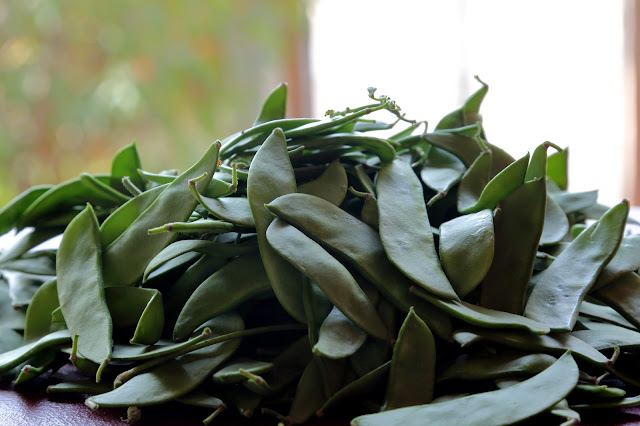In 2012, when we eliminated gluten from our home- we were also left pondering on what food we could eat, given that rice and wheat formed a substantial part of what we ate. Out of necessity, we began experimenting with various grains, many of which we never had even heard of. Subsequently, we also felt that we should try and grow our own food- Organically.
On our rocky piece of plot, with a couple of inches of soil and lots of books on how to grow food, we began our journey of growing our food. Durig this journey one such seed we sowed was this ‘broad bean’, and when in six months, it did not yield any legumes we had all but three creepers removed.
Two years later, the three remaining creepers finally flowered and have given a bounty of ‘broad beans’. The creeper is doing extremely well and in its long life has never been infested with any pest or disease. Not just that, we have been negligent in maintaining our plot- for months we have not watered it or mulched it and many of our crops and plants died during these periods of neglect. However, many did survive and one such survivor was this ‘broad Bean’. The plant grows in perhaps less than a few inches of soil in our plot and is thriving. It has seen sporadic periods of care and neglect and we find it hard to believe that it is so full of flowers. The reason why we put this post is, it conveys a powerful message.
As we connect to farmers around the country we see a growing number of them cultivating exotic crops that are not endemic to our climate- the major reason being, people are willing to pay a higher price to these products. In turn, we are increasingly consuming pesticide-laced vegetables, facing an acute water crisis and rising food cost- one major reason being we have forgotten the local variety of good food. Their resistance to pest and vagaries of climate, all built over years of evolution is something that is getting lost on us as we are relying more and more on chemicals to do what nature has provided us on a platter.
At House of Grains, we try our best to use such ethnic ingredients that are local, if not to the Konkan coast, at least to India. We hope, as days go by we can also make these items available to all those who visit us and hopefully restart an interest in local healthy food- they drop out of our memory.









